Makoshika State Park
- December 27, 2023
- 0 comment
Makoshika State Park is a hidden gem located in eastern Montana, USA. It stands as a geological masterpiece, weaving together a rich tapestry of ancient landscapes and prehistoric wonders. Spanning over 11,000 acres, it reigns as the largest of Montana’s state parks, a sprawling testament to the state’s vibrant natural heritage. Named after the Lakota Sioux term meaning ‘bad land’ or ‘land that is bad,’ Makoshika is a captivating blend of rugged badlands, home to fossilized treasures from the Hell Creek Formation.
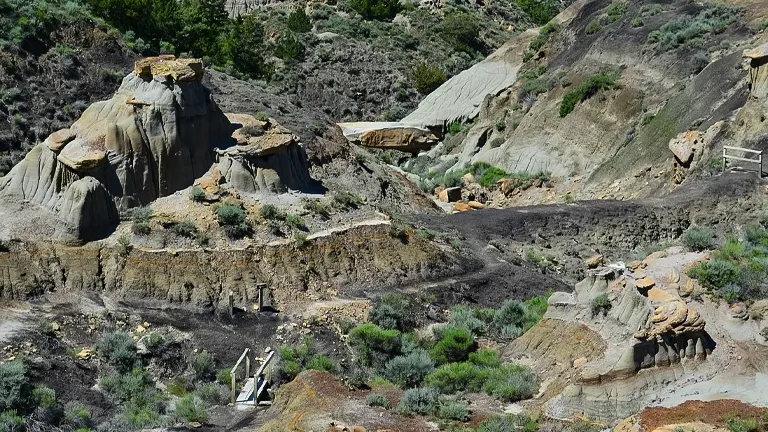
Beyond its geological significance, the park unfolds a narrative of resilience and community, with its roots tracing back to local aspirations for national recognition in 1938. Now, as a state park since 1939, Makoshika invites adventurers to explore its diverse terrain, from towering sandstone formations to nature trails teeming with the echoes of ancient life. In every crag and canyon, Makoshika whispers the tales of dinosaurs and the untamed beauty of Montana, making it an unmissable destination for those seeking a profound connection with Earth’s history.
Characterizing Features of the Makoshika State Park
- Badlands Terrain: Makoshika State Park is renowned for its expansive badlands terrain, characterized by rugged, eroded landscapes that expose layers of sedimentary rocks. The term “Makoshika” itself, derived from the Lakota Sioux language, translates to ‘bad land’ or ‘land that is bad.’ These unique geological formations offer visitors a journey through time, providing a glimpse into the ancient processes that shaped the region.
- Hell Creek Formation Fossils: One of the park’s defining features is its role as a repository for fossils from the Hell Creek Formation. This geological formation, dating back millions of years, has yielded remarkable discoveries of dinosaur fossils, including species such as Triceratops and Thescelosaurus. The park’s visitor center proudly displays these fossilized remnants, allowing visitors to connect with the prehistoric inhabitants of the region.
- Size and Scope: Makoshika stands as the largest state park in Montana, sprawling across more than 11,000 acres of diverse landscapes. Its vast expanse encompasses not only the iconic badlands but also a range of ecosystems, providing a haven for both geological enthusiasts and nature lovers. The park’s size allows for a variety of recreational activities and ensures that there’s always something new to discover around every bend.
- Historical Aspirations: Makoshika’s journey to becoming a state park began in 1938 when the Glendive Chamber of Commerce proposed it as a potential Badlands National Park. While federal officials deemed it “not of national significance,” the local community persisted. In 1939, the site officially became a state park through the donation of land by Dawson County. This historical context adds depth to the park’s identity, emphasizing the community’s dedication to preserving its natural wonders.
- Diverse Wildlife Habitat: Beyond its geological and paleontological significance, Makoshika serves as a habitat for diverse wildlife. Turkey vultures, prairie falcons, and golden eagles find a home within the park’s boundaries. This diversity adds a layer of intrigue for visitors, as they can witness not only the remnants of ancient life but also the thriving ecosystem that exists today.
- Educational Facilities and Programs: Makoshika State Park is not merely a passive attraction; it actively engages visitors through educational facilities and programs. The park’s visitor center features geology and fossil displays, providing a comprehensive understanding of the region’s natural history. Additionally, interpretive programs and events, such as the annual “Buzzard Day” celebration, foster a sense of community involvement and appreciation for the park’s unique features.
History
Makoshika State Park, nestled on the southeast side of Glendive in Dawson County, Montana, boasts a rich history woven into the fabric of its ancient badlands. The park’s journey began in 1938 when the Glendive Chamber of Commerce envisioned it as a potential Badlands National Park, seeking to showcase the unique and rugged landscapes that defined the region. Chamber secretary K. E. Burleigh wrote to federal officials, expressing the community’s eagerness to share their proposed badlands park and highlighting its potential to attract tourists to Glendive.
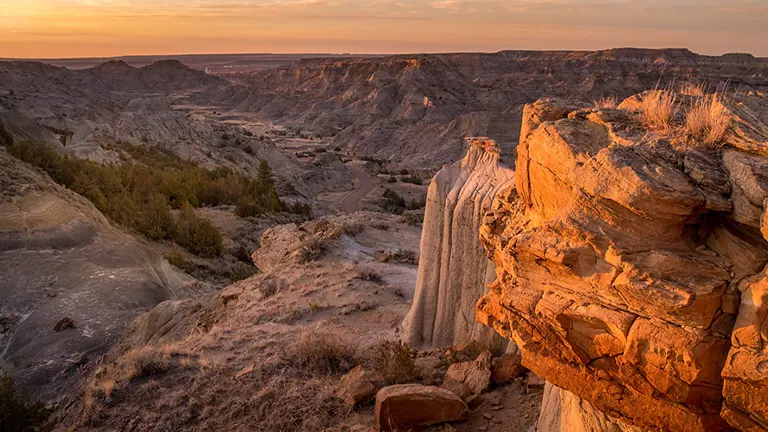
However, the National Park Service regional office, in a determination that would later prove a pivotal point in Makoshika’s history, considered the location “not of national significance.” Undeterred, the local community persevered, and in 1939, Makoshika State Park officially came into existence when Dawson County generously donated an initial 160 acres to the state. Over the following years, the park expanded its boundaries, acquiring additional lands from the U.S. Bureau of Land Management, Dawson County, and private landowners. This gradual growth transformed Makoshika into the expansive 11,000-acre natural wonder that it is today.
Makoshika’s significance extends beyond its geological allure. The park serves as a repository for fossils from the Hell Creek Formation, offering a window into the prehistoric past. Dinosaur fossils, including those of Triceratops and Thescelosaurus, have been unearthed within the park’s badlands. Notable discoveries, such as a 600-pound juvenile female triceratops skull in 1991 and a fossil thescelosaurus in 1997, have further solidified Makoshika’s reputation as a paleontological treasure trove.
Over the years, Makoshika has evolved into more than just a nature preserve. It is a living testament to the community’s dedication to preserving its natural wonders. The park’s educational facilities, including the visitor center with geology and fossil displays, provide visitors with a deeper understanding of the region’s geological and paleontological significance. Interpretive programs and annual events like “Buzzard Day” contribute to a sense of community engagement, making Makoshika not just a destination for exploration but a place where history and nature converge, inviting visitors to connect with the timeless beauty etched into the badlands of eastern Montana.
Importance in Conservation and Recreation of Makoshika State Park
Makoshika State Park stands as a cornerstone in the realms of conservation and recreation, offering a unique intersection of geological significance and outdoor activities. From a conservation perspective, the park serves as a crucial repository for fossils from the Hell Creek Formation, encapsulating a snapshot of Montana’s prehistoric past. The badlands within Makoshika cradle dinosaur fossils, including the remains of Triceratops and Thescelosaurus, contributing valuable insights to paleontological research. By preserving these ancient artifacts, the park plays a pivotal role in safeguarding a tangible record of Earth’s history.

Simultaneously, Makoshika provides an expansive playground for outdoor enthusiasts, embodying the essence of Montana’s natural beauty. Its sprawling 11,000 acres feature diverse landscapes, including towering sandstone formations, deep canyons, and rolling prairies. This expansive terrain fosters a myriad of recreational opportunities, from hiking along nature trails to scenic drives, archery, and camping in the heart of the badlands. The park’s visitor center, with its geology and fossil displays, not only educates but also inspires a sense of appreciation for the delicate balance between conservation and recreation. By offering a sanctuary for both ancient remnants and contemporary nature lovers, Makoshika State Park underscores the importance of preserving our geological heritage while providing a haven for present-day exploration and enjoyment.
Unique Location of Makoshika State Park
Makoshika State Park is uniquely positioned on the southeastern fringes of Glendive in Dawson County, Montana, showcasing a geographical tapestry that distinguishes it as an extraordinary destination. Spanning over 11,000 acres, the park’s badlands terrain, sculpted by the forces of erosion, reveals layers of sedimentary rocks that hold the secrets of millions of years. This distinctive landscape, often referred to as “bad land” or “land that is bad” in the Lakota Sioux language, reflects an ancient history etched into the very earth beneath our feet.
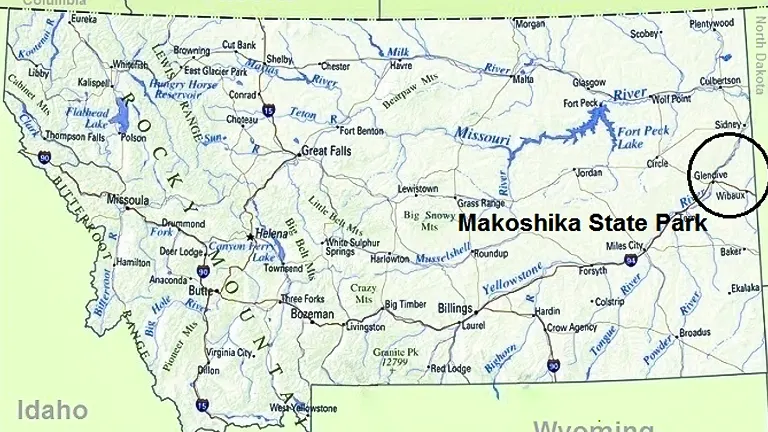
The park’s strategic location not only offers a striking panorama of rugged canyons and sandstone formations but also serves as a gateway to the Hell Creek Formation, a geological treasure trove that unfolds a chronicle of prehistoric life through dinosaur fossils. As the largest state park in Montana, Makoshika’s unique location weaves together the threads of geological wonder and paleontological significance, making it a captivating destination for those seeking to immerse themselves in the untold stories written in the rocks and contours of eastern Montana.
Diverse Vegetation and Unique Plant Species:
- Prairie Coneflower (Ratibida Columnifera): This flower is a native of the Great Plains and can be seen in abundance in Makoshika. It is known for its bright yellow petals and long, cone-shaped center.
- Wild Bergamot (Monarda Fistulosa): This plant is also known as bee balm due to its attraction to bees and other pollinators. It has a unique aroma and is often used in teas and as a medicinal herb.
- Blue Grama Grass (Bouteloua gracilis): This is a type of grass that is commonly found in the Great Plains region. It is drought-resistant and can survive in harsh conditions, making it a perfect fit for the arid climate of Makoshika.
- Western Yarrow (Achillea millefolium): This plant is known for its feathery leaves and clusters of small white flowers. It has a long history of use in traditional medicine.
- Ponderosa Pine (Pinus ponderosa): This type of pine tree is well adapted to the dry climate of Makoshika and can be seen throughout the park. It is known for its distinctive bark and large cones.
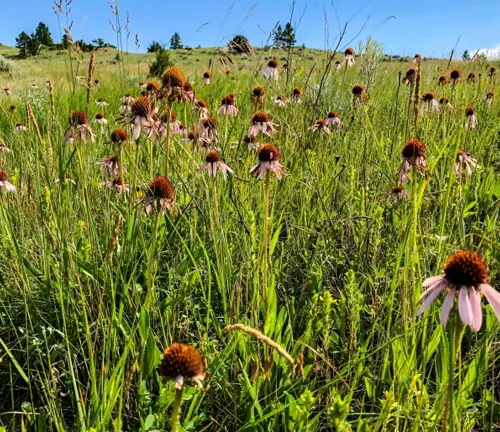
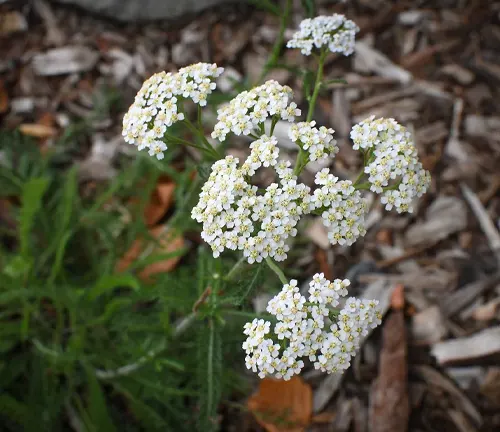
These plants and trees have adapted to the unique climate and conditions of Makoshika State Park, making them an integral part of the park’s ecosystem. Visitors can enjoy the beauty of these plants while also learning about their ecological importance and traditional uses.
Different Species of Mushrooms in Makoshika State Park
- Chanterelle Mushroom (Cantharellus cibarius): This mushroom is likely found in Makoshika State Park due to the presence of certain types of trees, such as conifers and oak trees, which it is known to grow in association with. Chanterelle mushrooms are an important part of the ecosystem as they help decompose organic matter and recycle nutrients in the soil.
- Morel Mushroom (Morchella): Morel mushrooms are often found in wooded areas and are known to grow in association with certain types of trees, such as aspen and elm trees. Makoshika State Park’s oak woodlands and forested areas provide a suitable habitat for these mushrooms. Morels are an important part of the ecosystem as they help break down organic matter and release nutrients back into the soil.
- Shaggy Mane Mushroom (Coprinus comatus): This mushroom is commonly found in open areas and can often be seen growing in grassy fields or along roadsides, making Makoshika State Park’s vast grasslands and prairies an ideal habitat for this species. Shaggy Mane mushrooms are important decomposers that help recycle nutrients in the soil.
- Turkey Tail Mushroom (Trametes versicolor): This mushroom is commonly found on dead or dying trees and is known to have medicinal properties. Makoshika State Park’s forests provide a suitable habitat for this species, which plays an important role in decomposing dead wood and recycling nutrients in the soil.
- King Bolete Mushroom (Boletus edulis): King Bolete mushrooms are often found in association with coniferous trees, such as pine and spruce. Makoshika State Park’s forests and woodlands provide a suitable habitat for this species. King Bolete mushrooms are important decomposers that help break down organic matter and recycle nutrients in the soil.
These mushrooms are an important part of Makoshika State Park’s ecosystem, playing a key role in nutrient cycling and decomposition. While some mushrooms have medicinal properties and are edible, visitors should exercise caution and avoid eating any mushrooms unless they have been properly identified by an expert.
Fauna:
- Mule Deer (Odocoileus hemionus): Mule deer are a common sight in Makoshika State Park, navigating the diverse landscapes of the badlands. Their presence is integral to the park’s ecosystem, contributing to the delicate balance between herbivores and plant life. The park’s varied terrain provides essential cover and foraging opportunities for mule deer.
- Coyotes (Canis latrans): Coyotes, exhibiting adaptability to a range of environments, thrive in the badlands of Makoshika. Their role as predators helps regulate smaller mammal populations, ensuring ecological balance. The park’s expansive and varied topography offers suitable hunting grounds for these elusive canines.
- Golden Eagles (Aquila chrysaetos): The skies above Makoshika State Park are often graced by the majestic presence of golden eagles. Their aerial prowess is well-suited to the open landscapes of the badlands. These raptors play a crucial role in the park’s ecosystem by helping control rodent populations, contributing to the overall health of the ecosystem.
- Turkey Vultures (Cathartes aura): Turkey vultures find a home in Makoshika, soaring gracefully above the canyons and cliffs. Their scavenging habits contribute to the park’s waste management, ensuring the efficient decomposition of animal remains. The unique geological features of the badlands provide optimal conditions for these birds to fulfill their ecological role.
- Prairie Falcons (Falco mexicanus): The badlands serve as a natural habitat for prairie falcons in Makoshika. These agile predators find ample opportunities for hunting small mammals amidst the rocky outcrops. The cliffs and canyons offer ideal nesting sites, showcasing the interconnected relationship between the park’s topography and its avian inhabitants.
- Bighorn Sheep (Ovis canadensis): Bighorn sheep, adapted to rugged terrains, inhabit the cliffs and rocky slopes of Makoshika State Park. Their presence underscores the park’s commitment to preserving native wildlife. The challenging topography of the badlands provides a natural haven for these iconic creatures.
- Black-Tailed Prairie Dogs (Cynomys ludovicianus): Black-tailed prairie dogs create bustling colonies across the grasslands of Makoshika, contributing to the park’s dynamic ecosystem. Their burrows serve as homes for various species, enhancing biodiversity. The openness of the badlands provides a suitable environment for these social rodents to thrive.
- Western Diamondback Rattlesnakes (Crotalus atrox): Western diamondback rattlesnakes are well-adapted to the arid conditions of Makoshika State Park. Their presence highlights the biodiversity within the park, playing a role in controlling rodent populations. The rocky outcrops and sun-drenched slopes provide ideal basking spots for these reptiles.

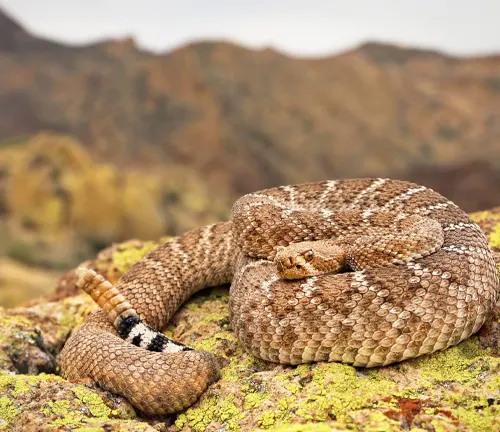
The diverse fauna of Makoshika State Park not only adds to the scenic beauty of the badlands but also plays a vital role in maintaining the ecological balance of this unique environment. Each species is intricately connected to the park’s geology, topography, and overall ecosystem, showcasing the interdependence between wildlife and the distinctive landscapes of eastern Montana.
Importance as a Wildlife Corridor and Habitat for Threatened Species
Makoshika State Park is a unique and important wildlife corridor located in eastern Montana. The park is home to a diverse range of flora and fauna, including many threatened and endangered species. One of the most significant aspects of Makoshika is its role as a crucial habitat for these species, providing them with a protected space to live and thrive. The park’s rugged terrain, which includes badlands, canyons, and prairie grasslands, supports a variety of plant life, including over 60 different species of mushrooms. These mushrooms play an important role in the ecosystem, providing food and habitat for a wide range of animals, including insects, birds, and mammals.
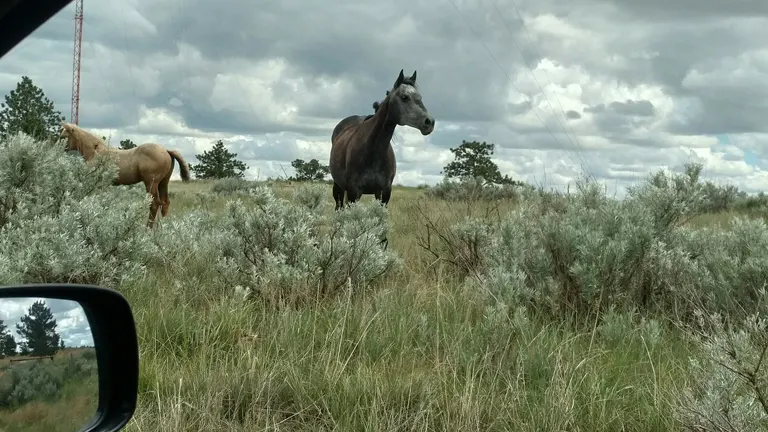
In addition to the many species of mushrooms, Makoshika is also home to a number of threatened and endangered species, including the swift fox, black-footed ferret, and ferruginous hawk. These animals rely on the park’s unique ecosystem to survive, and their presence in the park underscores the importance of protecting this vital wildlife corridor. Makoshika State Park is not only a crucial habitat for threatened species, but it also serves as an important educational resource for visitors. The park offers a variety of educational programs and events that focus on the importance of conservation and the protection of wildlife. By visiting the park and learning about the unique ecosystem that exists there, visitors can gain a greater appreciation for the importance of preserving these valuable natural resources for future generations.
Activities in Makoshika State Park for Visitors
1. Hiking Trails
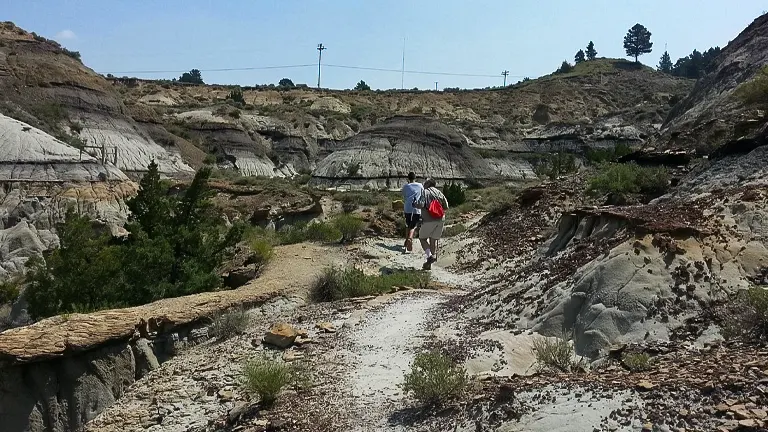
Makoshika State Park offers a network of hiking trails that wind through its diverse landscapes, allowing visitors to explore the badlands, canyons, and prairies. These trails vary in difficulty, catering to both casual strollers and avid hikers. The park’s trails not only provide breathtaking views but also offer an immersive experience, allowing visitors to connect with the unique geology and wildlife that define Makoshika.
2. Scenic Drives
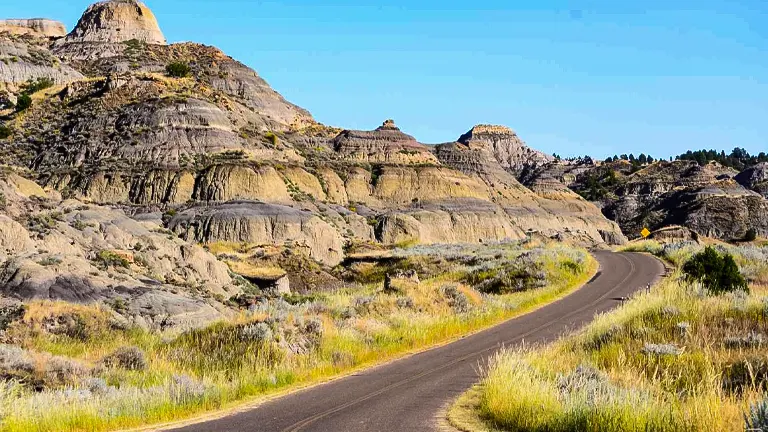
For those seeking a more leisurely exploration, scenic drives within the park provide an opportunity to appreciate the expansive beauty of Makoshika. Well-maintained roads wind through the badlands, offering panoramic views of towering sandstone formations and the vast Montana prairie. Scenic drives are an ideal way for visitors of all ages to absorb the park’s grandeur without venturing far from their vehicles.
3. Fossil Displays at the Visitor Center
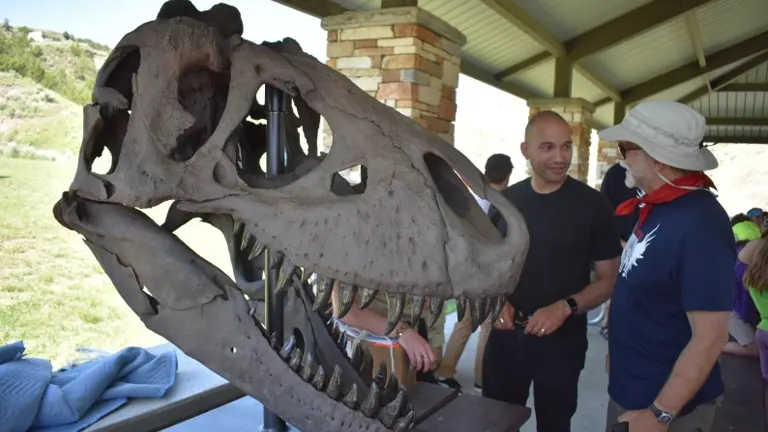
The park’s visitor center is a treasure trove of information and a must-visit for curious minds. Fossil displays showcase the rich paleontological history of Makoshika, including dinosaur remains from the Hell Creek Formation. The center provides a fascinating educational experience, offering insights into the prehistoric inhabitants that once roamed the badlands.
4. Nature Trails

Makoshika features nature trails that provide a closer look at the park’s flora and fauna. These trails are designed for a leisurely stroll, allowing visitors to observe native plants, spot wildlife, and absorb the subtle nuances of the park’s diverse ecosystems. Nature trails offer an intimate experience, connecting visitors with the natural rhythms of Makoshika.
5. Camping
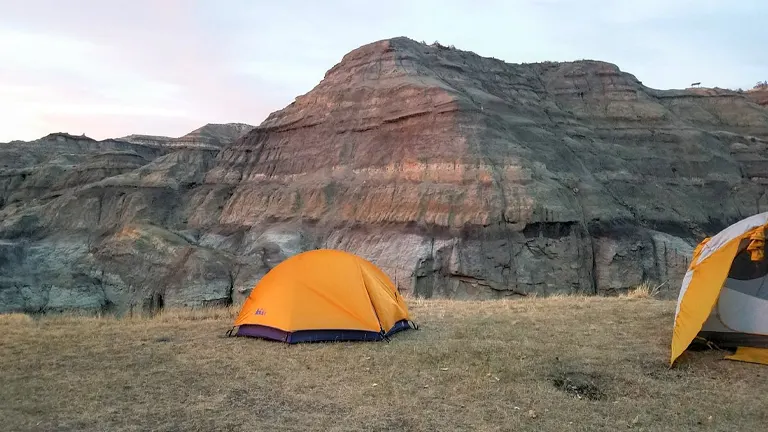
For those seeking an overnight adventure, Makoshika State Park provides camping facilities amidst the scenic surroundings of the badlands. The campground offers a rustic yet comfortable experience, allowing visitors to immerse themselves in the tranquility of the park under the vast Montana sky. Camping is a perfect way to extend the exploration and savor the peaceful ambiance of Makoshika.
6. Amphitheater Events
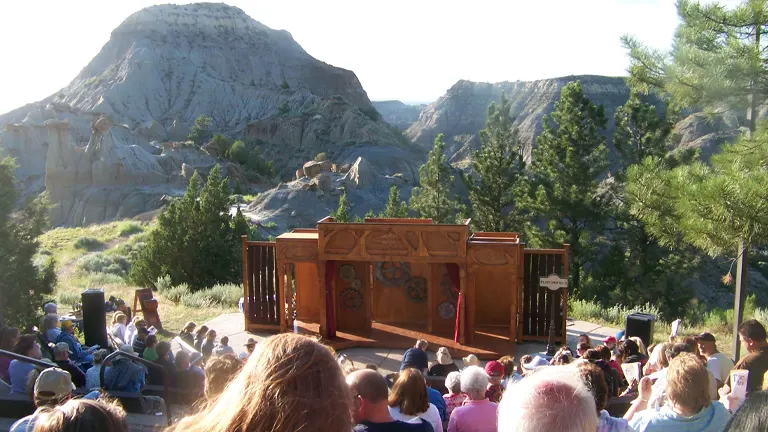
The park’s amphitheater hosts events and interpretive programs, providing a dynamic way for visitors to engage with the natural and cultural aspects of Makoshika. From educational talks to cultural performances, these events enhance the overall experience, fostering a deeper appreciation for the park’s significance and connecting visitors with its diverse narratives.
7. Picnicking Facilities
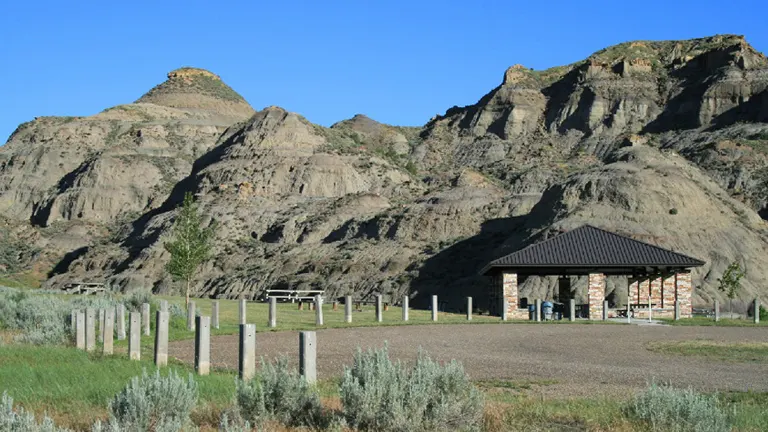
Makoshika invites visitors to relish the beauty of the outdoors with designated picnicking facilities. These areas offer a peaceful setting for families and groups to enjoy a meal while surrounded by the park’s breathtaking scenery. Picnicking becomes a delightful way to pause and absorb the serenity of Makoshika during a day of exploration.
From the thrill of hiking through ancient landscapes to the tranquility of a picnic under the vast Montana sky, Makoshika State Park provides a diverse array of activities for visitors. Each experience allows individuals to forge a personal connection with the park, whether through hands-on exploration, educational discovery, or simply reveling in the natural wonders that define this captivating destination.
Conservation and Management
- Trail Design and Maintenance: The conservation ethos at Makoshika State Park is exemplified through the careful design and maintenance of its trail system. Trails are strategically laid out to minimize ecological impact, preserving the delicate balance between visitor access and the protection of the park’s unique landscapes. Regular maintenance ensures that these routes provide safe and sustainable opportunities for exploration without compromising the integrity of the environment.
- Vegetation Preservation: Native vegetation, including sagebrush, buffalo grass, and prairie junegrass, is a focal point of conservation efforts at Makoshika. These plants not only contribute to the park’s aesthetic appeal but also play a vital role in stabilizing soil and supporting diverse wildlife. Through targeted preservation initiatives, the park ensures the continued health of these native species, promoting a resilient and sustainable ecosystem.
- Wildlife Corridor Management: Makoshika State Park recognizes the importance of wildlife corridors in maintaining genetic diversity and ecological balance. The management strategy includes actively preserving and enhancing these corridors, allowing species like mule deer and bighorn sheep to move freely through the park’s diverse habitats. This commitment contributes to the overall health and resilience of the regional wildlife populations.
- Research and Education Partnerships: Makoshika engages in collaborative efforts with local communities and educational institutions to advance research and environmental education. By fostering partnerships, the park enhances its understanding of the local ecosystem and promotes scientific literacy among visitors. These initiatives not only contribute to the broader field of conservation but also instill a sense of responsibility and appreciation for the park’s natural wonders.
- Cultural Resource Preservation: Beyond its geological and ecological significance, Makoshika State Park is rich in cultural heritage. Conservation efforts extend to the preservation of cultural resources, including historical artifacts and sites. Through careful management, the park safeguards these elements, allowing visitors to connect with the region’s diverse history while respecting the integrity of these cultural assets.
- Visitor Education and Stewardship: Makoshika places a strong emphasis on visitor education to cultivate a sense of stewardship. Interpretive programs, guided tours, and informational signage impart knowledge about the park’s geological features, wildlife, and the importance of conservation. By fostering an understanding of the delicate balance within the ecosystem, the park encourages responsible and respectful behavior among its visitors.
- Water Conservation Practices: Water conservation is a key aspect of Makoshika’s management strategy, given the arid nature of the badlands. The park implements measures to responsibly manage water resources, ensuring that water usage aligns with sustainable practices. This includes considerations for vegetation hydration, wildlife habitats, and overall ecosystem health.
Makoshika State Park’s comprehensive approach to conservation and management encapsulates a commitment to balancing human enjoyment with the preservation of its unique natural and cultural heritage. Through thoughtful initiatives, the park ensures that current and future generations can continue to experience the awe-inspiring landscapes and rich biodiversity that define this Montana treasure.
Recommendation
I highly recommend checking out Makoshika State Park for an amazing mix of nature and culture. This park is known for its diverse ecosystems, cool landmarks, and fun things to do. Get into outdoor activities like hiking and watching wildlife, and you’ll be helping keep the park safe too. The beautiful trails, interesting historical spots, and teamwork on conservation projects make Makoshika State Park a must-visit if you want a great blend of nature and fun adventures.
Conclusion
In conclusion, Makoshika State Park is a must-visit destination for anyone who loves nature and outdoor activities. With its unique landscapes, fossils, and wildlife, the park offers a one-of-a-kind experience that is both educational and entertaining. Whether you are interested in hiking, camping, or simply relaxing in a serene environment, Makoshika State Park has something for everyone. Despite its limited amenities, the park compensates with its natural beauty and peaceful atmosphere. Overall, Makoshika State Park is a hidden gem that is worth exploring. If you are planning a trip to Montana, make sure to add this park to your itinerary. You won’t be disappointed!
FAQs
- Are there any nocturnal activities at Makoshika State Park?
Yes, Makoshika offers unique night sky programs, providing an opportunity to stargaze in the tranquil badlands. Astronomy enthusiasts can explore the wonders of the cosmos, guided by experts who unravel the mysteries of the night sky. - Can I find petrified wood in Makoshika State Park?
While the park is known for its dinosaur fossils, petrified wood is not commonly found. The geological formations primarily consist of sedimentary rocks, contributing to the distinct badlands landscape. - Are there any hidden gems or secret spots within Makoshika?
Exploring the park might unveil hidden alcoves and secluded viewpoints. While there are no official “secret” spots, adventurous visitors may discover lesser-known areas that offer a more intimate connection with the park’s raw beauty. - What is the best time of year to visit for wildflower enthusiasts?
Spring, particularly May and early June, is the optimal time to witness the blooming wildflowers in Makoshika. The badlands come alive with bursts of color, creating a stunning backdrop for nature enthusiasts and photographers. - Can I witness any unique animal behaviors during specific seasons?
Yes, during the spring, the park becomes a nesting ground for various bird species. Observing the courtship and nesting behaviors of birds such as prairie falcons and golden eagles adds a unique wildlife experience. - Is there a recommended trail for photography enthusiasts?
Photographers often enjoy the Diane Gabriel Trail, offering panoramic views of the badlands and opportunities to capture the play of light and shadow. Sunrise and sunset provide especially enchanting lighting conditions. - Are there any folklore or legends associated with Makoshika?
While the park is rich in geological history, it also holds cultural significance for Native American tribes. Visitors can explore interpretive programs that share stories and legends tied to the land, providing a deeper connection with its heritage. - Can I participate in paleontological activities as a visitor?
While active excavation is not open to the public, visitors can engage in fossil talks and educational programs led by paleontologists. These programs offer insights into the ongoing research and discoveries within the park.
And that’s a wrap on our journey through Makoshika State Park! We hope that you’ve enjoyed this glimpse into the wonders of one of Montana’s most beloved natural treasures. From the towering rock formations to the fascinating dinosaur fossils, Makoshika truly has something to offer for everyone. So if you’re ever in the area, be sure to stop by and experience the magic of this unique park for yourself. We guarantee that you’ll be glad you did!



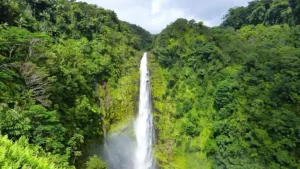

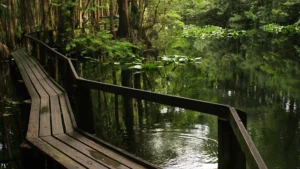
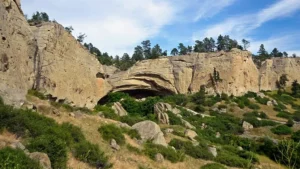

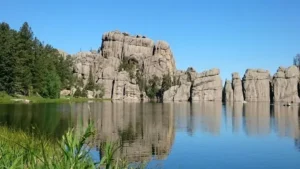
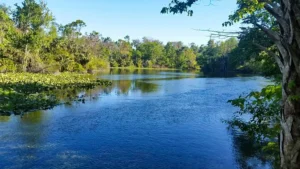
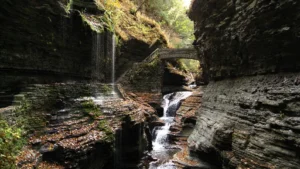
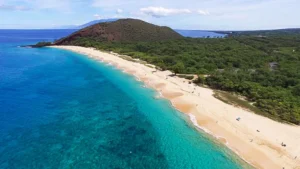
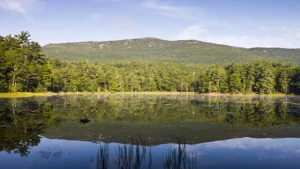

Leave your comment